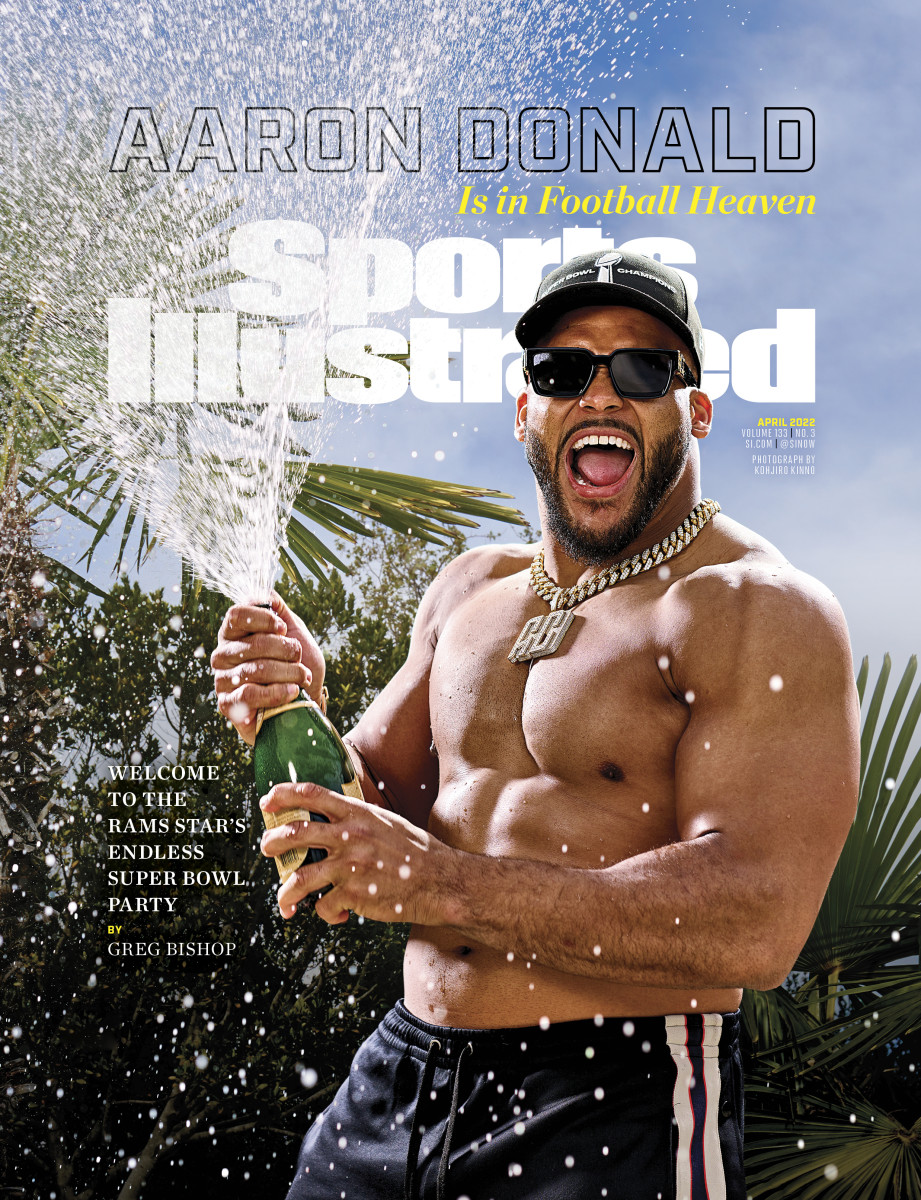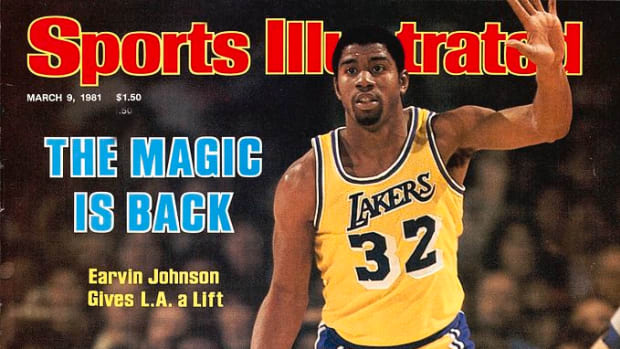SI:AM | What Denver’s Roller-Coaster Day Says About the NFL
Good morning, I’m Dan Gartland. I wish my team could find a competent quarterback.
If you're reading this on SI.com, you can sign up to get this free newsletter in your inbox each weekday at SI.com/newsletters.
Now the offseason can really begin

The two biggest pieces of the NFL offseason puzzle fell into place yesterday, with Aaron Rodgers’s agreeing to stay in Green Bay and the Broncos’ trading for Russell Wilson.
Rodgers reportedly agreed to a four-year contract worth $200 million, $153 million of which is guaranteed money. (In typical Rodgers fashion, he denied the report by misrepresenting what the media had reported about the deal but did confirm he’ll be back in Green Bay.) The agreement marks the end of Rodgers’s protracted leverage play in which he threatened to retire (or perhaps force a trade to the Broncos, we’ll get to them shortly) to get the Packers to break the bank.
Broncos fans couldn’t stay disappointed for long, though. Shortly after the Rodgers news broke, word came down that Denver had agreed to a trade for Wilson. Here’s what the deal looks like:
- Broncos receive: Russell Wilson, one fourth-round pick
- Seahawks receive: Drew Lock, Noah Fant, Shelby Harris, two first-round picks, two second-round picks, one fifth-round pick
The two moves reinforce the notion that in the NFL, quarterbacks are the only thing that matter. There are basically two ways to reach a Super Bowl: draft a good quarterback in the top half of the first round and take advantage of his relatively low rookie-contract salary to invest in other areas (as the Bengals did with Joe Burrow or the Seahawks did with Wilson early in his career). Or build a well-rounded team and pull the trigger on a veteran quarterback acquisition as the final piece (as the Buccaneers did with Tom Brady, the Rams did with Matthew Stafford or these same Broncos did with Peyton Manning). There are other ways, of course. You could hire a gifted offensive coach who unlocks the full potential of an otherwise mediocre quarterback (such as Sean McVay with Jared Goff or Kyle Shanahan with Jimmy Garoppolo), but that’s more challenging.
The Broncos were an afterthought last season. They allowed the third-fewest points in the NFL, but they were never going to accomplish anything noteworthy while relying on Teddy Bridgewater and Drew Lock to lead the offense. Now, after adding Wilson, Denver is an instant Super Bowl contender. (It has the fifth-best championship odds in the league at two major sportsbooks.) That isn’t an overreaction to yesterday’s news, either. Adding a top-notch quarterback, one who has won a Super Bowl before, would change the outlook for any team, especially one that boasted such a strong defense last year and has some talented receivers, too.
The flip side of this is how the current reliance on star quarterbacks divides the NFL into haves and have-nots. Now that the shuffling of top-tier, star quarterbacks is likely done for the year, you can draw up a list of 10 or so teams with championship-quality quarterbacks and say with some confidence that one of them will win the Super Bowl. There’s always the potential for a surprise, like the emergence of Burrow, but realistically, this time of year, when transactions like these are made, is when Super Bowls are won.
The best of Sports Illustrated

Today’s Daily Cover is a profile of Aaron Donald by Greg Bishop, who shadowed the Rams star as he celebrated his Super Bowl win and contemplated retirement.
“I’m still living in the moment,” Donald says, nine days after the Super Bowl triumph, his words accurate and incomplete. That’s because no matter where he goes or what he does, the question strangers, teammates and [LeBron] James asked lingers, even in football heaven: What’s next?
Here are SI’s 2022 men’s basketball All-American teams, led by three guys from the Big Ten. … And SI's women's All-American teams have plenty of star power, too. ... Kevin Hanson ranks the top quarterback prospects in the NFL draft. … Ben Pickman has five takeaways from the women’s conference tournaments, including the strength of the SEC. … On the latest episode of SI Weekly, Pat Forde joins to talk about Merl Code, the former sneaker executive at the center of the college basketball bribery scandal.
SI’s Morning Madness newsletter is coming back. Our daily NCAA tournament newsletter starts up again on Monday, March 14, with all the post–Selection Sunday takes. Sign up for free at SI.com/newsletters.
Around the Sports World
MLB and the players union continued negotiations into the early morning hours again but left without a deal. … A fight involving fans and players broke out at the NEC men’s championship game between Bryant and Wagner. … Tony Hawk broke his femur in a skating accident. … The Seahawks are also parting ways with veteran linebacker Bobby Wagner.
The top 5...
… college hoops celebrations from last night:
5. Gonzaga men after winning the WCC
4. Gonzaga women after winning the WCC
3. Last-place Canisius after beating No. 6 seed Monmouth in the MAAC women’s tournament
2. Bellarmine students rush the court after winning the Atlantic Sun men’s tournament (although the Knights are ineligible for the NCAA tournament)
1. Jameer Nelson Jr.’s emotional moment with his dad after leading Delaware to the NCAA tournament
SIQ
On this day in 1995, with the strike that had begun seven months earlier still unresolved, MLB officially approved expansion franchises in Arizona and Tampa Bay. The Diamondbacks’ ownership group was led by Phoenix Suns owner Jerry Colangelo. The Rays franchise was granted to an investor named Vince Naimoli, who had previously tried to purchase which MLB team and move it to Tampa Bay?
Check tomorrow’s newsletter for the answer.
Yesterday’s SIQ: After Gregg Popovich, who is second among active NBA head coaches in regular-season wins?
Answer: Doc Rivers (1,031), followed by Rick Carlisle (858) and Nate McMillan (719).
If we’re looking ahead at who might break Popovich’s record, Rivers is not a bad bet. He’s 305 wins behind Popovich as it stands now, but breaking the record would be largely contingent upon how long Popovich continues to coach. If Pop retires after this season (and there’s no indication that he will), Rivers would have to win more than 50 games a year for six years to catch him. At 60, it’s plausible that Rivers could coach at least that long.
The most likely pick to surpass Popovich might be Erik Spoelstra. He has won 650 games with the Heat and, at 51, is the youngest coach with at least 500 wins. He has the Heat on the verge of their 11th playoff appearance in his 14 seasons in charge. It’s difficult to imagine Miami ever letting him go, and, if it did, another team would likely scoop him up instantly. He can coach for as long as wants to, and, if he lasts another 15 years, he’d need to average about 45 wins per season to catch Pop.
From the Vault: March 9, 1981

As a rookie in the 1979–80 season, Magic Johnson proved to be the missing piece the Lakers needed. He joined a team, led by the great Kareem Abdul-Jabbar, that had been to the playoffs three years in a row but failed to take home a title. Following a 47–35 season and a second-round exit in ’79, the Lakers had the No. 1 pick in the draft thanks to a ’76 trade with the Jazz and a coin flip. They used it to select Johnson, who was an All-Star as a rookie and the third-leading scorer on an L.A. team that wound up winning its first title since ’72.
But the Lakers’ missing piece was just … missing for most of the next season. Magic injured his knee in November and had surgery to remove a piece of cartilage. He missed 45 games over the course of 100 days, and when he returned, it was cause for celebration. Johnson’s comeback against the New Jersey Nets on Feb. 27 was the subject of the March 9, 1981, Sports Illustrated cover story.
Mostly, though, the story is about how Johnson, at 21 and only in his second year in the NBA, had become the Lakers’ spiritual leader.
“I was pleased with the way we carried on without him,” coach Paul Westhead told writer John Papanek. “But when Magic wasn’t with us our performance—in practices, games, trips—was surgical: neat, clean, minimal talking, no nonsense. But when Magic returned it was like Looney Tunes. He created havoc. Everybody started laughing again. It was unreal.”
Check out more of SI’s archives and historic images at vault.si.com.
